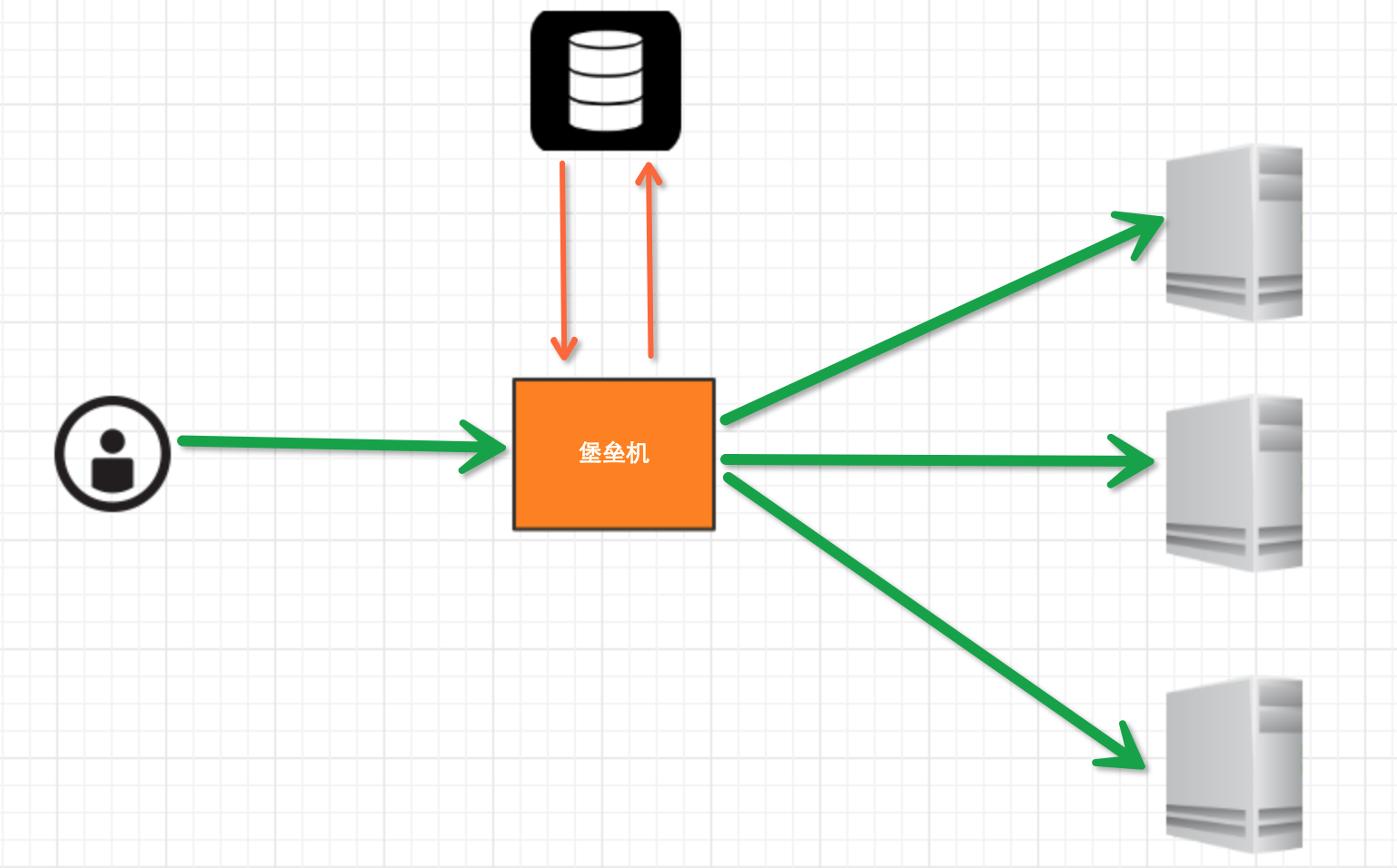Python之paramiko模块和SQL连接API
堡垒机前戏
开发堡垒机之前,先来学习Python的paramiko模块,该模块机遇SSH用于连接远程服务器并执行相关操作
SSHClient
用于连接远程服务器并执行基本命令
基于用户名密码连接:
import paramiko # 创建SSH对象
ssh = paramiko.SSHClient()
# 允许连接不在know_hosts文件中的主机
ssh.set_missing_host_key_policy(paramiko.AutoAddPolicy())
# 连接服务器
ssh.connect(hostname='c1.salt.com', port=22, username='weibinf', password='') # 执行命令
stdin, stdout, stderr = ssh.exec_command('df')
# 获取命令结果
result = stdout.read() # 关闭连接
ssh.close()
import paramiko
transport = paramiko.Transport(('hostname', 22))
transport.connect(username='wupeiqi', password='')
ssh = paramiko.SSHClient()
ssh._transport = transport
stdin, stdout, stderr = ssh.exec_command('df')
print stdout.read()
transport.close()
SSHClient 封装 Transport
基于公钥密钥连接:
import paramiko
private_key = paramiko.RSAKey.from_private_key_file('/home/auto/.ssh/id_rsa')
# 创建SSH对象
ssh = paramiko.SSHClient()
# 允许连接不在know_hosts文件中的主机
ssh.set_missing_host_key_policy(paramiko.AutoAddPolicy())
# 连接服务器
ssh.connect(hostname='c1.salt.com', port=22, username='weibinf', key=private_key)
# 执行命令
stdin, stdout, stderr = ssh.exec_command('df')
# 获取命令结果
result = stdout.read()
# 关闭连接
ssh.close()
import paramiko
private_key = paramiko.RSAKey.from_private_key_file('/home/auto/.ssh/id_rsa')
transport = paramiko.Transport(('hostname', 22))
transport.connect(username='weibinf', pkey=private_key)
ssh = paramiko.SSHClient()
ssh._transport = transport
stdin, stdout, stderr = ssh.exec_command('df')
transport.close()
SSHClient 封装 Transport
SFTPClient
用于连接远程服务器并执行上传下载
基于用户名密码上传下载
import paramiko
transport = paramiko.Transport(('hostname',22))
transport.connect(username='weibinf',password='')
sftp = paramiko.SFTPClient.from_transport(transport)
# 将location.py 上传至服务器 /tmp/test.py
sftp.put('/tmp/location.py', '/tmp/test.py')
# 将remove_path 下载到本地 local_path
sftp.get('remove_path', 'local_path')
transport.close()
基于公钥密钥上传下载
import paramiko
private_key = paramiko.RSAKey.from_private_key_file('/home/auto/.ssh/id_rsa')
transport = paramiko.Transport(('hostname', 22))
transport.connect(username='weibinf', pkey=private_key )
sftp = paramiko.SFTPClient.from_transport(transport)
# 将location.py 上传至服务器 /tmp/test.py
sftp.put('/tmp/location.py', '/tmp/test.py')
# 将remove_path 下载到本地 local_path
sftp.get('remove_path', 'local_path')
transport.close()
堡垒机的实现
实现思路:

堡垒机执行流程:
- 管理员为用户在服务器上创建账号(将公钥放置服务器,或者使用用户名密码)
- 用户登陆堡垒机,输入堡垒机用户名密码,现实当前用户管理的服务器列表
- 用户选择服务器,并自动登陆
- 执行操作并同时将用户操作记录
注:配置.brashrc实现ssh登陆后自动执行脚本,如:/usr/bin/python /home/weibinf/menu.py
实现过程
步骤一,实现用户登陆
import getpass
user = raw_input('username:')
pwd = getpass.getpass('password')
if user == 'weibinf' and pwd == '':
print '登陆成功'
else:
print '登陆失败'
步骤二,根据用户获取相关服务器列表
dic = {
'weibinf': [
'172.16.103.189',
'c10.puppet.com',
'c11.puppet.com',
],
'xs': [
'c100.puppet.com',
]
}
host_list = dic['weibinf']
print 'please select:'
for index, item in enumerate(host_list, 1):
print index, item
inp = raw_input('your select (No):')
inp = int(inp)
hostname = host_list[inp-1]
port = 22
步骤三,根据用户名、私钥登陆服务器
tran = paramiko.Transport((hostname, port,))
tran.start_client()
default_path = os.path.join(os.environ['HOME'], '.ssh', 'id_rsa')
key = paramiko.RSAKey.from_private_key_file(default_path)
tran.auth_publickey('wupeiqi', key) # 打开一个通道
chan = tran.open_session()
# 获取一个终端
chan.get_pty()
# 激活器
chan.invoke_shell() #########
# 利用sys.stdin,肆意妄为执行操作
# 用户在终端输入内容,并将内容发送至远程服务器
# 远程服务器执行命令,并将结果返回
# 用户终端显示内容
######### chan.close()
tran.close()
while True:
# 监视用户输入和服务器返回数据
# sys.stdin 处理用户输入
# chan 是之前创建的通道,用于接收服务器返回信息
readable, writeable, error = select.select([chan, sys.stdin, ],[],[],1)
if chan in readable:
try:
x = chan.recv(1024)
if len(x) == 0:
print '\r\n*** EOF\r\n',
break
sys.stdout.write(x)
sys.stdout.flush()
except socket.timeout:
pass
if sys.stdin in readable:
inp = sys.stdin.readline()
chan.sendall(inp)
Linux连接方式一
# 获取原tty属性
oldtty = termios.tcgetattr(sys.stdin)
try:
# 为tty设置新属性
# 默认当前tty设备属性:
# 输入一行回车,执行
# CTRL+C 进程退出,遇到特殊字符,特殊处理。 # 这是为原始模式,不认识所有特殊符号
# 放置特殊字符应用在当前终端,如此设置,将所有的用户输入均发送到远程服务器
tty.setraw(sys.stdin.fileno())
chan.settimeout(0.0) while True:
# 监视 用户输入 和 远程服务器返回数据(socket)
# 阻塞,直到句柄可读
r, w, e = select.select([chan, sys.stdin], [], [], 1)
if chan in r:
try:
x = chan.recv(1024)
if len(x) == 0:
print '\r\n*** EOF\r\n',
break
sys.stdout.write(x)
sys.stdout.flush()
except socket.timeout:
pass
if sys.stdin in r:
x = sys.stdin.read(1)
if len(x) == 0:
break
chan.send(x) finally:
# 重新设置终端属性
termios.tcsetattr(sys.stdin, termios.TCSADRAIN, oldtty)
Linux连接方式二
def windows_shell(chan):
import threading sys.stdout.write("Line-buffered terminal emulation. Press F6 or ^Z to send EOF.\r\n\r\n") def writeall(sock):
while True:
data = sock.recv(256)
if not data:
sys.stdout.write('\r\n*** EOF ***\r\n\r\n')
sys.stdout.flush()
break
sys.stdout.write(data)
sys.stdout.flush() writer = threading.Thread(target=writeall, args=(chan,))
writer.start() try:
while True:
d = sys.stdin.read(1)
if not d:
break
chan.send(d)
except EOFError:
# user hit ^Z or F6
pass 肆意妄为方式三
Windows连接方式
注:密码验证 t.auth_password(username, pw)
详见:paramiko源码demo
数据库操作
Python 操作 Mysql 模块的安装
linux:
yum install MySQL-python window:
http://files.cnblogs.com/files/wupeiqi/py-mysql-win.zip
SQL基本使用
1、数据库操作
show databases;
use [databasename];
create database [name];
2、数据表操作
show tables; create table students
(
id int not null auto_increment primary key,
name char(8) not null,
sex char(4) not null,
age tinyint unsigned not null,
tel char(13) null default "-"
);
CREATE TABLE `wb_blog` (
`id` smallint(8) unsigned NOT NULL,
`catid` smallint(5) unsigned NOT NULL DEFAULT '',
`title` varchar(80) NOT NULL DEFAULT '',
`content` text NOT NULL,
PRIMARY KEY (`id`),
UNIQUE KEY `catename` (`catid`)
) ;
数据库插入表
3、数据操作
insert into students(name,sex,age,tel) values('alex','man',18,'')
delete from students where id =2;
update students set name = 'sb' where id =1;
select * from students
4、其他
主键
外键
左右连接
Python MySQL API
一、插入数据
import MySQLdb
conn = MySQLdb.connect(host='127.0.0.1',user='root',passwd='',db='mydb')
cur = conn.cursor()
reCount = cur.execute('insert into UserInfo(Name,Address) values(%s,%s)',('weibinf','usa'))
conn.commit()
cur.close()
conn.close()
print reCount
import MySQLdb conn = MySQLdb.connect(host='127.0.0.1',user='root',passwd='',db='mydb') cur = conn.cursor() li =[
('weibinf','usa'),
('xs','usa'),
]
reCount = cur.executemany('insert into UserInfo(Name,Address) values(%s,%s)',li) conn.commit()
cur.close()
conn.close() print reCount 批量插入数据
批量插入数据
注意:cur.lastrowid
二、删除数据
import MySQLdb
conn = MySQLdb.connect(host='127.0.0.1',user='root',passwd='',db='mydb')
cur = conn.cursor()
reCount = cur.execute('delete from UserInfo')
conn.commit()
cur.close()
conn.close()
print reCount
三、修改数据
import MySQLdb
conn = MySQLdb.connect(host='127.0.0.1',user='root',passwd='',db='mydb')
cur = conn.cursor()
reCount = cur.execute('update UserInfo set Name = %s',('alin',))
conn.commit()
cur.close()
conn.close()
print reCount
四、查数据
# ############################## fetchone/fetchmany(num) ############################## import MySQLdb conn = MySQLdb.connect(host='127.0.0.1',user='root',passwd='',db='mydb')
cur = conn.cursor() reCount = cur.execute('select * from UserInfo') print cur.fetchone()
print cur.fetchone()
cur.scroll(-1,mode='relative')
print cur.fetchone()
print cur.fetchone()
cur.scroll(0,mode='absolute')
print cur.fetchone()
print cur.fetchone() cur.close()
conn.close() print reCount # ############################## fetchall ############################## import MySQLdb conn = MySQLdb.connect(host='127.0.0.1',user='root',passwd='',db='mydb')
#cur = conn.cursor(cursorclass = MySQLdb.cursors.DictCursor)
cur = conn.cursor() reCount = cur.execute('select Name,Address from UserInfo') nRet = cur.fetchall() cur.close()
conn.close() print reCount
print nRet
for i in nRet:
print i[0],i[1]
参考:http://www.cnblogs.com/wupeiqi/articles/5095821.html
Python之paramiko模块和SQL连接API的更多相关文章
- 使用python的Paramiko模块登陆SSH
使用python的Paramiko模块登陆SSH paramiko是用Python语言写的一个模块,遵循SSH2协议,支持以加密和认证的方式,进行远程服务器的连接. python的paramiko模块 ...
- (转)python的paramiko模块
python的paramiko模块 原文:http://www.cnblogs.com/breezey/p/6663546.html paramiko是用python语言写的一个模块,遵循S ...
- Python之paramiko模块
今天我们来了解一下python的paramiko模块 paramiko是python基于SSH用于远程服务器并执行相应的操作. 我们先在windows下安装paramiko 1.cmd下用pip安装p ...
- 利用python 下paramiko模块无密码登录
利用python 下paramiko模块无密码登录 上次我个大家介绍了利用paramiko这个模块,可以模拟ssh登陆远程服务器,并且可以返回执行的命令结果,这次给大家介绍下如何利用已经建立的密钥 ...
- python的paramiko模块
paramiko是用python语言写的一个模块,遵循SSH2协议,支持以加密和认证的方式,进行远程服务器的连接.paramiko支持Linux, Solaris, BSD, MacOS X, ...
- python的paramiko模块的安装与使用
一:简介 paramiko是用python语言写的一个模块,遵循SSH2协议,支持以加密和认证的方式,进行远程服务器的连接. 由于使用的是python这样的能够跨平台运行的语言,所以所有python支 ...
- Python修改paramiko模块开发运维审计保垒机
目前市面上,专门做IT审计堡垒机的厂商有很多,他们的产品都有一个特点,那就是基本上每台的售价都在20万以上.像我们做技术的,不可能每次待的公司都是大公司,那么在小公司,是不太可能投资20多万买一台硬件 ...
- python(paramiko模块的简单使用)
#通过paramiko模块连接主机运行bash命令 import paramiko hostname = '192.168.88.31' port = 22 username = 'root' pas ...
- python paramiko模块:远程连接服务器
1. SFTP基于 用户名密码 登录服务器,实现上传下载: import paramiko transport = paramiko.Transport(()) # 生成trasport,配置主机名 ...
随机推荐
- css 文字展示两行 其余的省略号显示
<!DOCTYPE html> <html> <head> <meta charset="UTF-8"> <title> ...
- OO第一阶段作业总结
对于OO这门课,学长学姐偶尔提起,大家都略有耳闻,但是并没有将其和计组相提并论.因此,在刚开始接触的时候,并不认为其会比计组难到哪里去,然而事实证明,还是不要想当然去判断,以及不提前学好JAVA对于O ...
- 《大象Think in UML》阅读笔记之二
Think in UML阅读笔记(二) 上一次读到面向对象和面向过程的区别和各自的优势,结合实例分析了面向过程在面对大数据的时候,已经不足以满足人们的需求,所以引入了面向对象,面向对象的方法把世界看做 ...
- 剑指offer:二位数组中的查找
准备找实习期间,复习一下数据相关内容,刷刷题. 题目描述: 在一个二维数组中(每个一维数组的长度相同),每一行都按照从左到右递增的顺序排序,每一列都按照从上到下递增的顺序排序.请完成一个函数,输入这样 ...
- 【CSAPP笔记】14. 异常控制流和进程
从给处理器加电,到断电为止,处理器做的工作其实就是不断地读取并执行一条条指令.这些指令的序列就叫做 CPU 的控制流(control flow).最简单的控制流是"平滑的",也就是 ...
- SQL SERVER安装(2008)
首先需要下载SQL SERVER2008安装程序:为省的麻烦给出网盘地址自行下载,百度网盘:密码:hslb 1.下载到你所选定文件夹中,我下载在E:\SQL SERVER中 2.选择第一个.exe文件 ...
- 订制EditText光标
订制EditText光标 设置背景android:background="@null" 设置光标样式:android:textCursorDrawable="@drawa ...
- HTTP压力测试工具wrk的安装及测试
本次在VMware虚拟机的CentOS6.3系统中进行安装wrk压测工具,具体如下: 一.预先安装需求项 为了安装顺利,不受权限的限制,首先可以把用户切换为root用户# su + 输入root用户对 ...
- C语言版kafka消费者代码运行时异常kafka receive failed disconnected
https://github.com/edenhill/librdkafka/wiki/Broker-version-compatibility如果使用了broker版本是0.8的话, 在运行例程时需 ...
- MDN & IRC
MDN IRC MDN IRC xgqfrms https://developer.mozilla.org/en-US/docs/Mozilla/QA/Getting_Started_with_IRC ...
